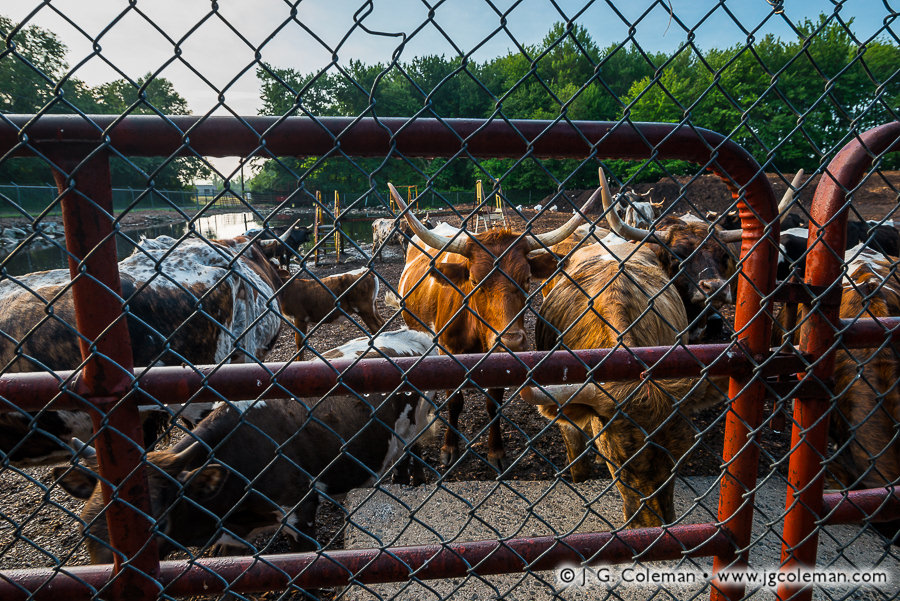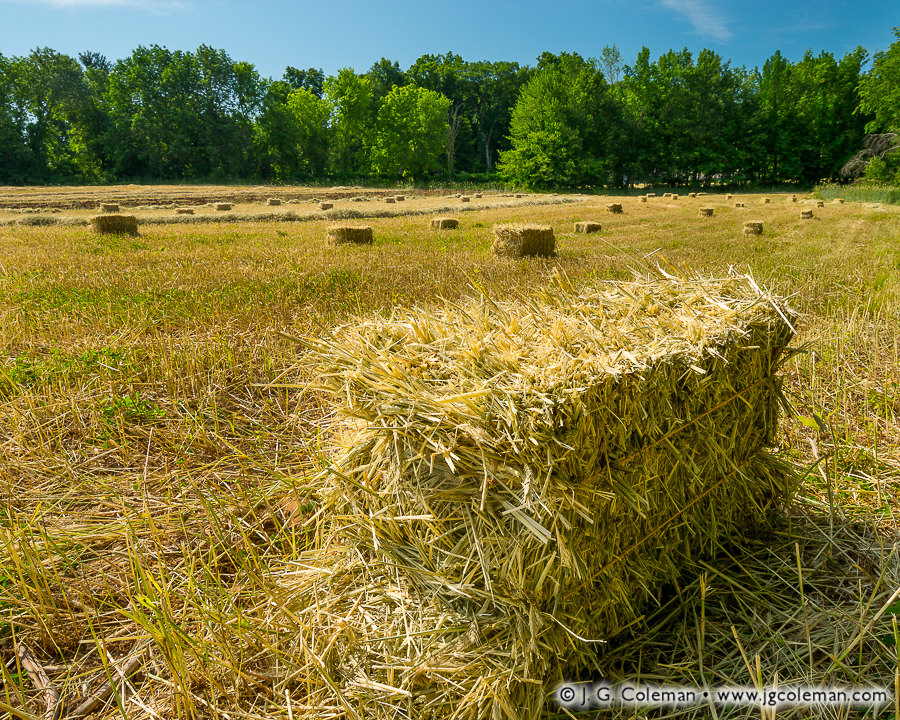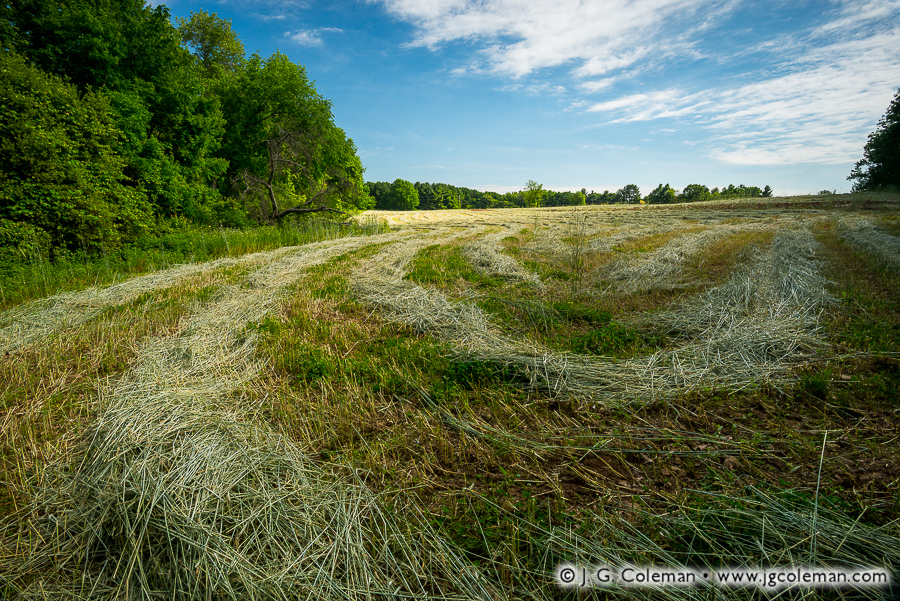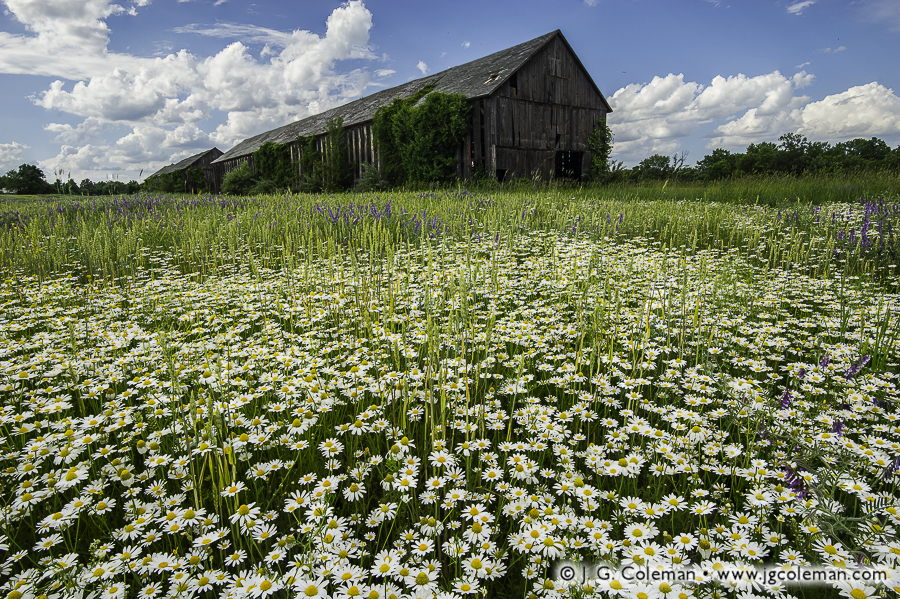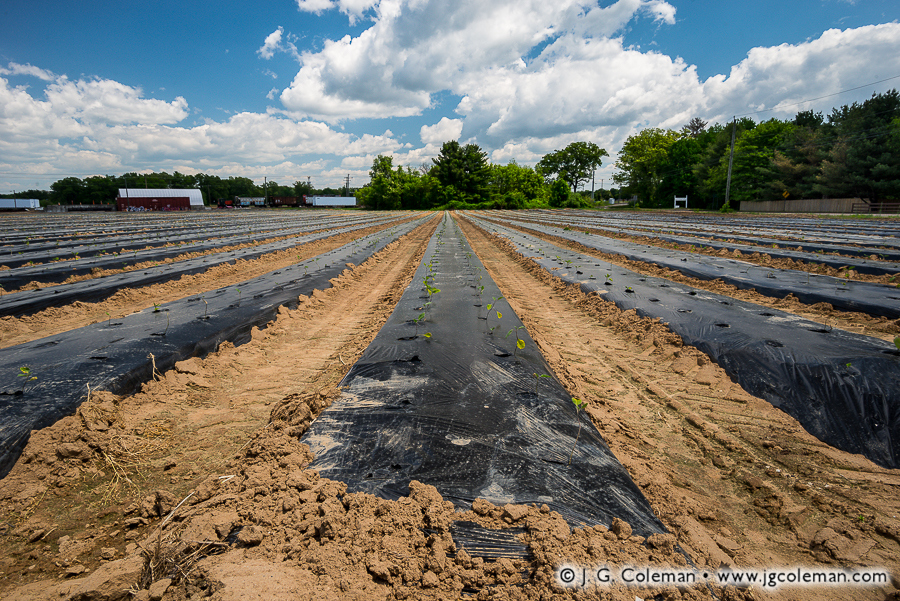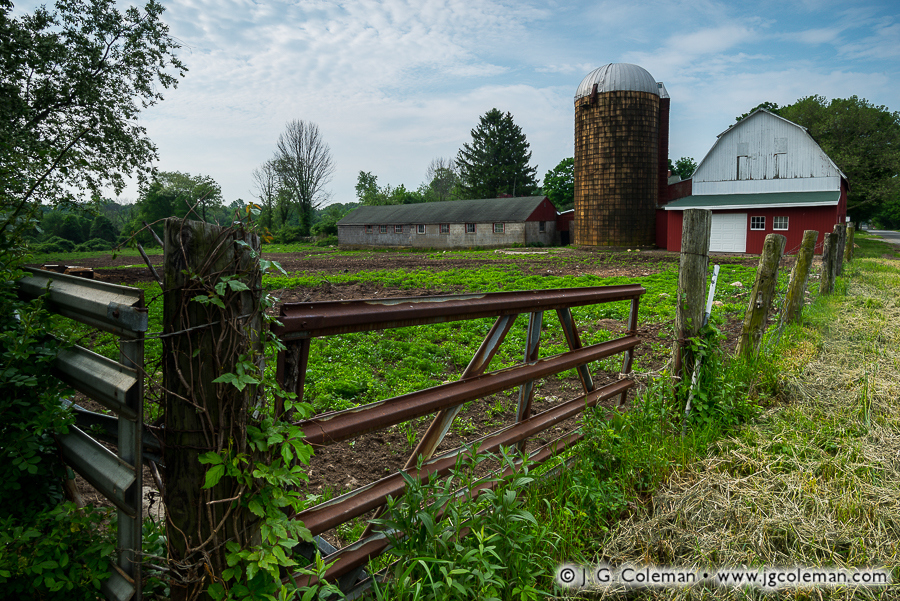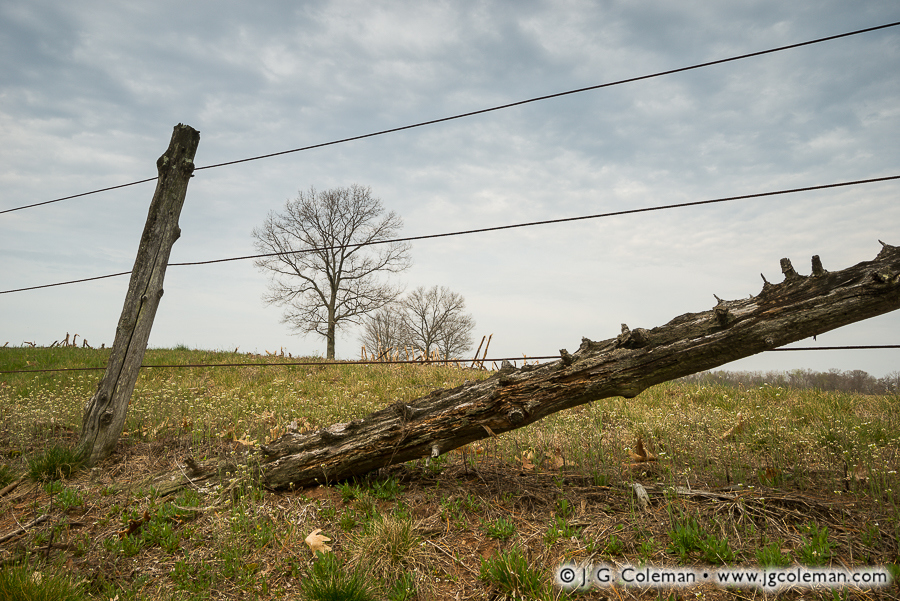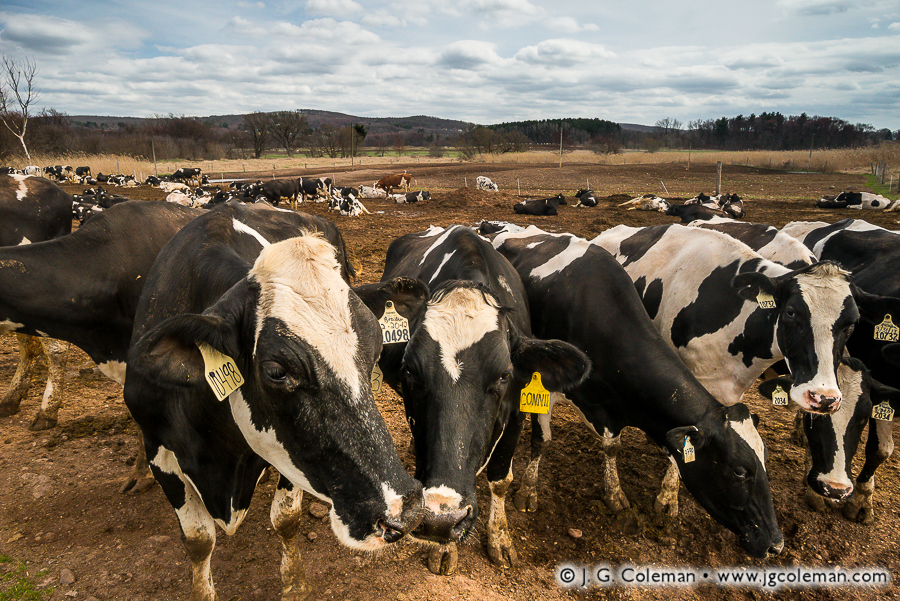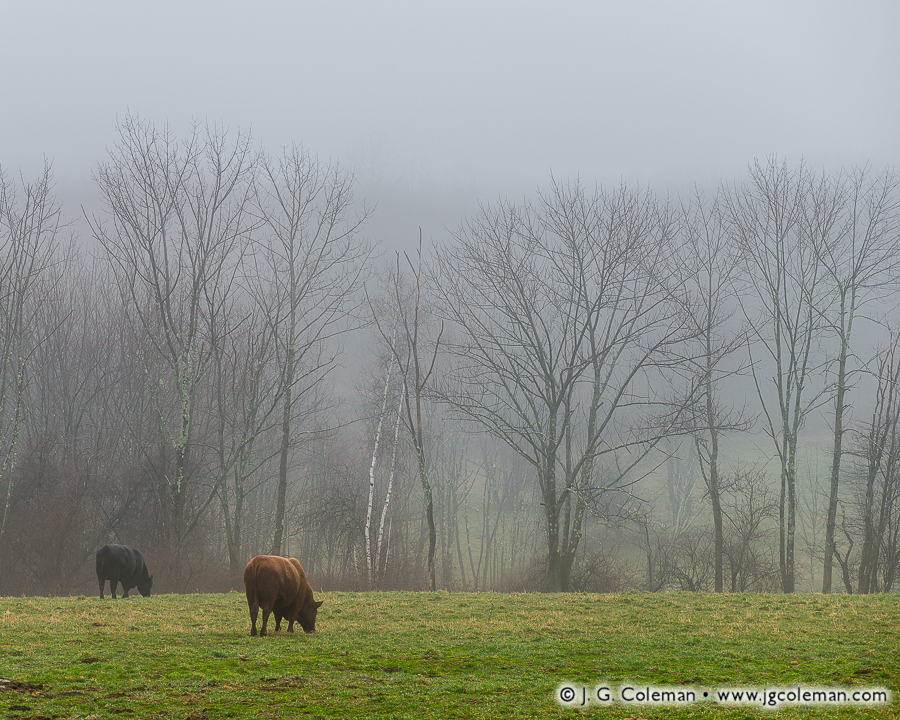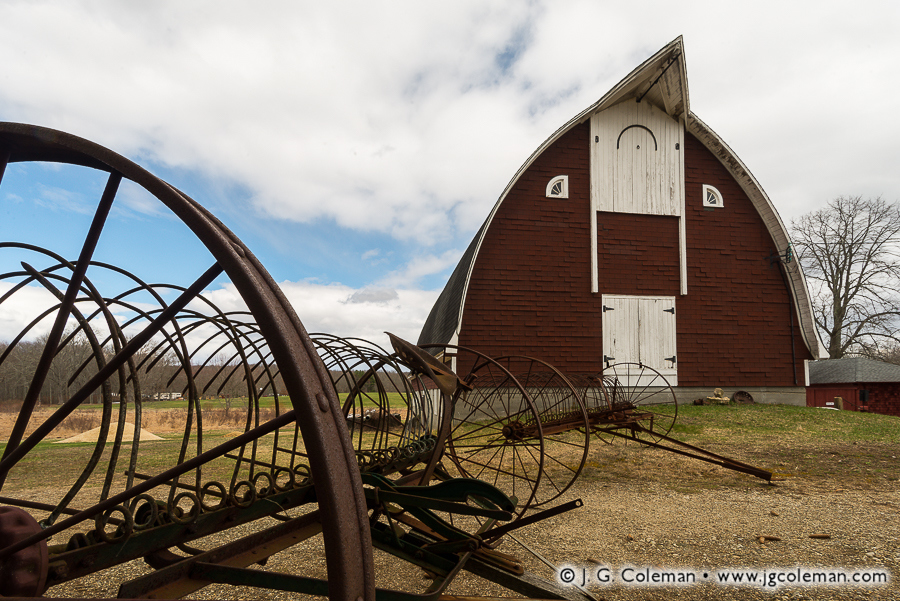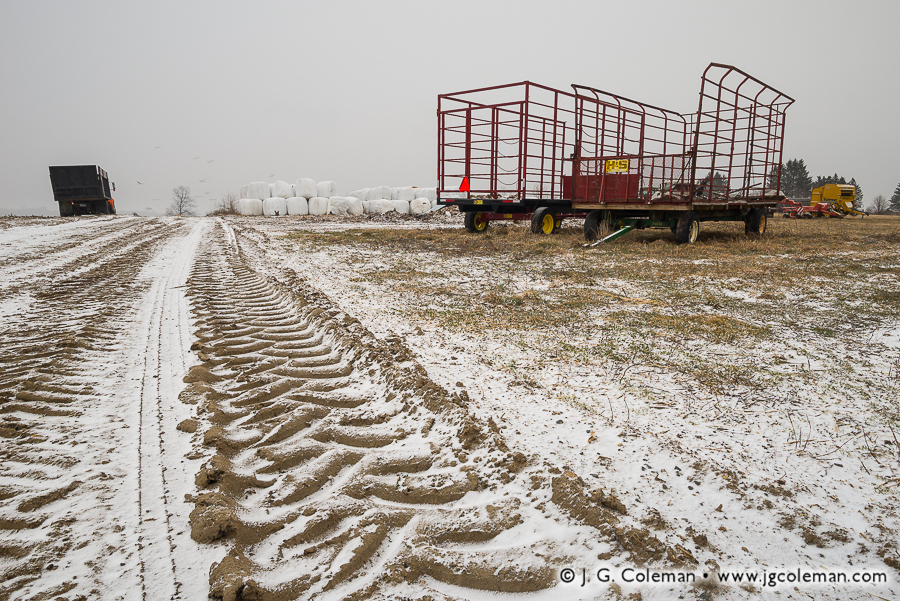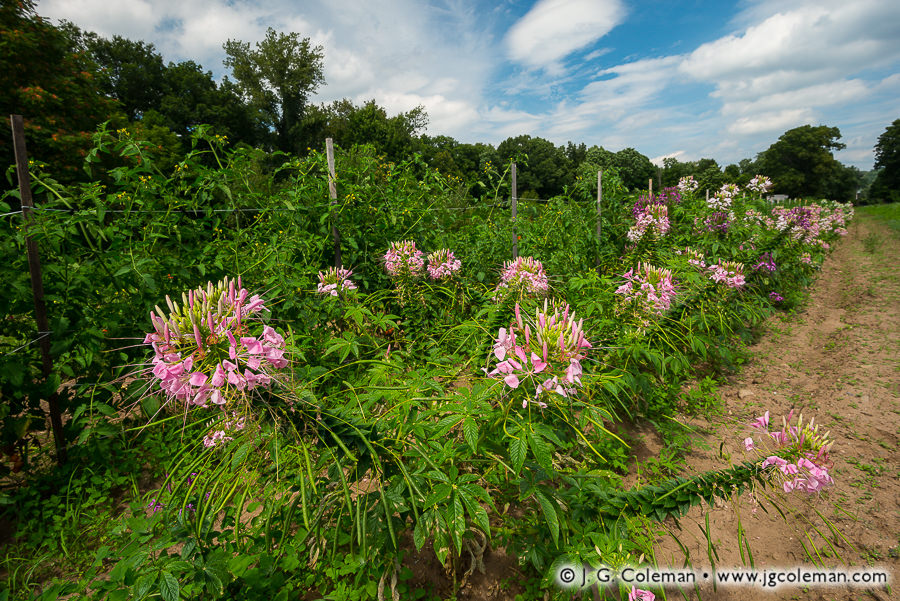
Field of decorative flowers, Simsbury, Connecticut
© 2016 J. G. Coleman
Exotic blossoms invite vivid color into a dusty farm field in Northern Connecticut where decorative flowers have reached maturity. Blue skies and a leaf-dense woodline embody the warmth and vitality of late summer in New England.
I’ve recently finished shooting for my Yankee Farmlands project, an endeavor which I thought would require roughly a year of work. Well, here we are now… nearly two and half years after I shot Yankee Farmlands № 1 at a hayfield in East Granby. It’s been a far longer, and far more rewarding, journey than I could’ve anticipated.
Over the coming weeks, I’ll be rolling out all of the final installments of the project, picking things back up where I left off in late summer, transitioning through this past autumn and concluding with pieces I produced recently this winter. I sincerely hope that you enjoy the visual story I’ve sought to tell about Connecticut’s agricultural landscapes; it’s certainly been a pleasure to create the final chapters.
Purchase a Fine Art Print or Inquire About Licensing
Click here to visit my landing page for “Yankee Farmlands № 83” to buy a beautiful fine art print or inquire about licensing this image.
Want to See More?
Be sure to check out all of the work in my on-going Yankee Farmlands project.


